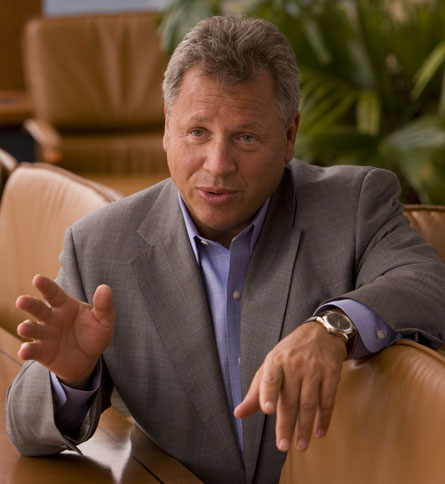What do you do next when your company has grown from an annual turnover of around $700 million to more than $14 billion in barely a decade? In the case of US giant L-3 Communications, the answer lies in additional expansion, but with greater emphasis on organic growth.
"The first 10 years was spent on building and getting to this critical mass," says chief executive Michael Strianese (below). "The company grew very fast through acquisition to $10 billion-plus. Today we're 14 [billion] and change. That creates a different model, with different focuses and opportunities."
 |
|---|
© L-3 Communications |
Over half of L-3's revenues are from aviation-related activities, with its business spread across four areas: command, control, communications, intelligence, surveillance and reconnaissance government services aircraft maintenance and modernisation and specialised products, including commercial avionics and electro-optical/infrared sensors.
"The growth model is changing to really hone in on those areas that we see continued growth, and establishing even more capability," says Strianese. As an example, L-3 earlier this year acquired Northrop Grumman's Electro-Optical Systems (EOS) unit for $175 million, expanding its EO/IR activities - where it had previously acquired Wescam - to a more than $800 million business delivering double-digit growth.
Strianese joined L-3 at its formation in 1997 as vice-president of finance, rising to chief executive following the death of Frank Lanza in mid-2006. Two years on, Strianese says L-3 is "a much broader, integrated company that is focused on capability and the international marketplace," and no longer operates on a "fragmented business-by-business case".
The company's crowning aerospace achievement came last year, when it won the US Army/US Air Force Joint Cargo Aircraft project teamed with Alenia Aeronautica. The army's first C-27J Spartan recently flew in Italy and should be delivered late this year.
"L-3 has come of age as a prime contractor [with JCA], and can deliver," says Strianese. "What makes us different is we can participate from a major systems prime to bringing our systems integration experience to bear as a major subcontractor, all the way down to just supplying product."
In the subcontractor role, L-3 will be the communications system integrator for the US Navy's Broad Area Maritime Surveillance fleet of modified Northrop RQ-4 Global Hawk unmanned air vehicles. The companies have also teamed for the navy's EPX intelligence aircraft requirement, and for the US Army's revived Airborne Common Sensor project.
"I'm very pleased to win independently, or as a significant teammate with the platform makers," says Strianese. "Flexibility is key to our business model."
On the international stage, L-3 established a UK presence early this decade, also making local acquisitions, largely in the ISR arena. The company has subsequently enjoyed strong success, becoming mission system integrator on the Raytheon Systems-led Airborne Standoff Radar programme, and will provide EO/IR sensors for British Army/Royal Navy AgustaWestland Future Lynx helicopters.
It was also selected earlier this year to deliver the Helix mission system upgrade to the Royal Air Force's British Aerospace Nimrod R1 electronic intelligence aircraft, and is "working closely with the Ministry of Defence on defining the system performance and contract specifications," says Strianese. "Winning Helix was further confirmation that our model is working correctly in the UK," he adds. "Our capability clearly speaks for itself."
International success is contributing towards L-3's current organic growth of around 7-9% a year, but the company continues to look to supplement this performance through "very carefully chosen acquisitions," says Strianese. "I'm very comfortable with the model, and where we're positioned right now," he adds.
L-3 is engaged in several potential deals comparable with its recent purchase of Northrop's EOS business. "We're interested in all opportunities that make sense in terms of synergy with our business model, or bringing new products, technologies and customers into the fold," says Strianese. "I would predict that we would have at least one, perhaps two more this year in that size range."
While describing more major purchases as "long shots for now", he notes: "If a larger deal were to present itself then we have the financing flexibility to do that as well. But we don't lose sight of the fact that we have to buy companies at a price that produces real economic returns for our shareholders. There is no 'must-have' for us anymore: we're very selective."
Source: Flight International























